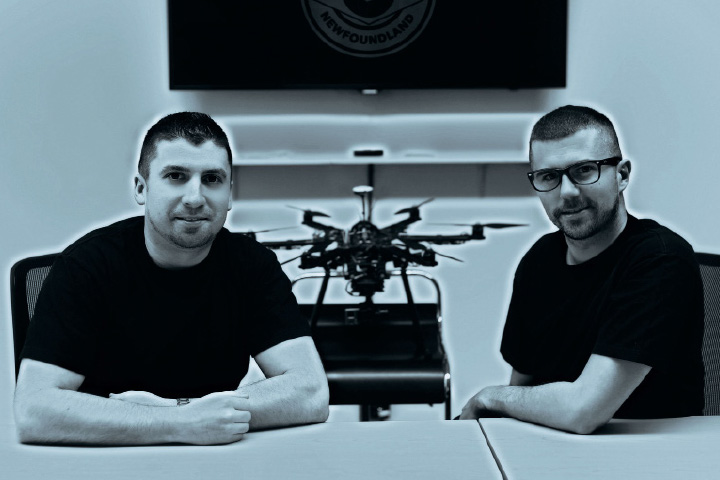by Tina Olivero
Published on June 16th, 2014
Many Roads Lead To Drone
The hottest new innovations droning the globe are state-of-the-art “unmanned aerial vehicles” (UAVs). More commonly known as a drone, these small aircrafts fly around without a human pilot on board.
The term unmanned aircraft system (UAS) emphasizes the importance of other elements beyond the aircraft itself. A typical UAS consists of the following features:
- Unmanned aircraft (UA);
- Control system, such as Ground Control Station (GCS);
- Control link, a specialized data link;
- Other related support equipment.
In 2013, it was reported that UAVs were used by at least 50 countries, with many countries making their own drones. As of 2008, the United States Air Force employed 5,331 drones, which is twice its number of manned planes.
Drones are controlled in flight either by on-board computers or by remote control from the ground. Initially deployed as a military and special operations solution, drones are now becoming common place in the energy industry with applications in monitoring projects, surveillance of pipelines, hard-to-access destinations and heights, and many other safety applications.
Unmanned aerial vehicles are permitted to fly in Canada when they meet “model aircraft” conditions set out in the Canadian Aviation Regulations or the operator has a Special Flight Operations Certificate (SFOC). Model aircraft “means an aircraft, the total weight of which does not exceed 35 kg (77.2 pounds), that is mechanically driven or launched into flight for recreational purposes.” By definition, a UAV is no longer a model aircraft if it has met these two conditions: (1) owned by a company not an individual, and (2) used for profit.
As described by Transport Canada (TC), as soon as you make money or become contracted to use your model aircraft, it no longer qualifies as a model aircraft. Your model aircraft is now a UAV and requires a SFOC to fly.
If you want to use a UAV for profit in Canada, you need a SFOC every time your UAV is in Canadian Airspace. Even testing and development outdoors requires an SFOC, by way of application with TC.
This process ensures that you will not be putting the public in any danger or disrupting air traffic in any way. When you apply at TC, you can get an SFOC that indicates a range of dates and times for your projects. TC advises having a 100-foot horizontal buffer between people and the UAV. Obtaining an SFOC is common place in Canada, and as of May 17, 2012, it’s free. This is because the law strictly prohibits UAVs without these certificates. However, if anyone is found breaking UAV laws, there are individual penalties of $5,000 and a corporate penalty of $25,000.
Drones Supporting Industry
Drones have been around since the late 1800s. As technology advanced and drones became the norm, these UAVs are making unprecedented advances in “how we view the world.” Imagine being at sea and sending out your drone to look back at the rig you are working on. What do you think that might add to the experience, safety, and operations of life on a rig? Great concept.
Understanding the way of the future and the opportunities ahead, the team of Benjamin Davis and Joshua Parsons have started their own drone company called Aerial Photo Newfoundland.
Benjamin, currently a pilot, has been building his own drones since he was a boy. He says, “I’ve always loved tinkering with planes, and making my own drones later on in life just seemed like a natural progression.”Joshua Parson, the marketing and filming director of Aerial Photo Newfoundland, says, “The energy industry will have countless opportunities for drones to support their operations, in all areas of business – building oil rigs, shipping, transport, safety, and the list goes on. As our clients come up with drone solutions and money saving strategies, we predict that drones will be a powerful solution moving forward. We want to be there when they call with customized and efficient means of making ‘alternate views’ available.”
Joshua explains the outlook for the future, “Drones are powerful tools for monitoring, assessing risk, and ensuring safety measures are intact. As a tool for search and rescue, UAVs can help find humans lost in the wilderness, trapped in collapsed buildings, or lost at sea. We are excited about the future, and we expect to be able to support energy clients with customized drone solutions. At the end of the day, a drone’s job is to give you a higher vantage point and a higher bottom line. The number of applications for drones in the energy industry are truly endless, and the next five years will reveal how drones capture the market. We are about to see that many roads lead to Drone.”
Did you enjoy this article?

 Ajay Royan - Superman Over the Golden Gate Bridge
Ajay Royan - Superman Over the Golden Gate Bridge Calgary: Opening Doors To Energy Technology
Calgary: Opening Doors To Energy Technology The Innovation Gap
The Innovation Gap Cyber Security and Control Networks: From Business Risks to Safety Risks
Cyber Security and Control Networks: From Business Risks to Safety Risks The Cloud
The Cloud
